LongShot AI was one of the early adopters to GPT back then, where you could generate short-form content.
Today they’ve built a fact-checking module and much more to help you generate articles in it’s entirety, fact-checked and plagiarism-checked.
So let’s dive in and see how good it is.
Key Takeaways
- LongShot AI generates your content and lets you fact-check it.
- You can use their workflows to create just the content you want.
- Their templates make generating content such as blog outlines, tone transformers, and more easy.
Pros And Cons Using LongShot AI
I signed up for LongShot back in June 2021, and while I haven’t used it non-stop, I have followed along and tested the features thoroughly.
Here are my pros and cons of using LongShot AI.
Pros of LongShot AI
- Every tool is trained and specified for its use case, whether it's a blog outline or a summary of a long text.
- The FactGPT works very well and helps you speed up checking everything is factually correct.
- The Wizard helps you generate a blog post with outlines and content research.
Cons of LongShot AI
- There is no chat to request content in a specific format. KoalaChat works very well for this.
- The wizard has a bit too many steps to generate an article compared to how I do in my Koala Writer AI review.
LongShot AI
My Quick Take
LongShot AI caught me by surprise. They’ve developed some awesome AI Copywriting modules with the FactGPT and repurpose modules.
It’s definitely a time-saving tool to help you generate content.

What Is LongShot AI?

LongShot AI is a platform that utilises GPT 3 to generate content. It’s perfect for content writers who want to utilise artificial intelligence to become more efficient.
LongShot AI review is a comprehensive analysis of the capabilities and potential of the newly developed artificial intelligence technology.
LongShot started with minor tools to help you generate high-quality content for social media posts, but today you can do much more.
You can generate everything from a full blog post to more concentrated content pieces like a summary of a long text or a blog outline.
They’ve worked hard on their FactGPT, which you can use to check your facts to ensure they’re correct.
As you might know, AI lies all the time, so having a fact checker just like how Katteb fact-check AI is an awesome feature.
But let’s get into their AI features, and let me show you how it went when I tested them.
Join 900+ to receive a weekly SEO video from my YouTube channel, which I’ll share, and an actionable SEO tip every week.
LongShot AI Review Features
Now for the exciting part, let’s go through the features where I’ll test everything from writing an entire article using the wizard to some simple fact-checking of blog content.
Let’s dive into LongShot AI’s tools.
AI Workflows
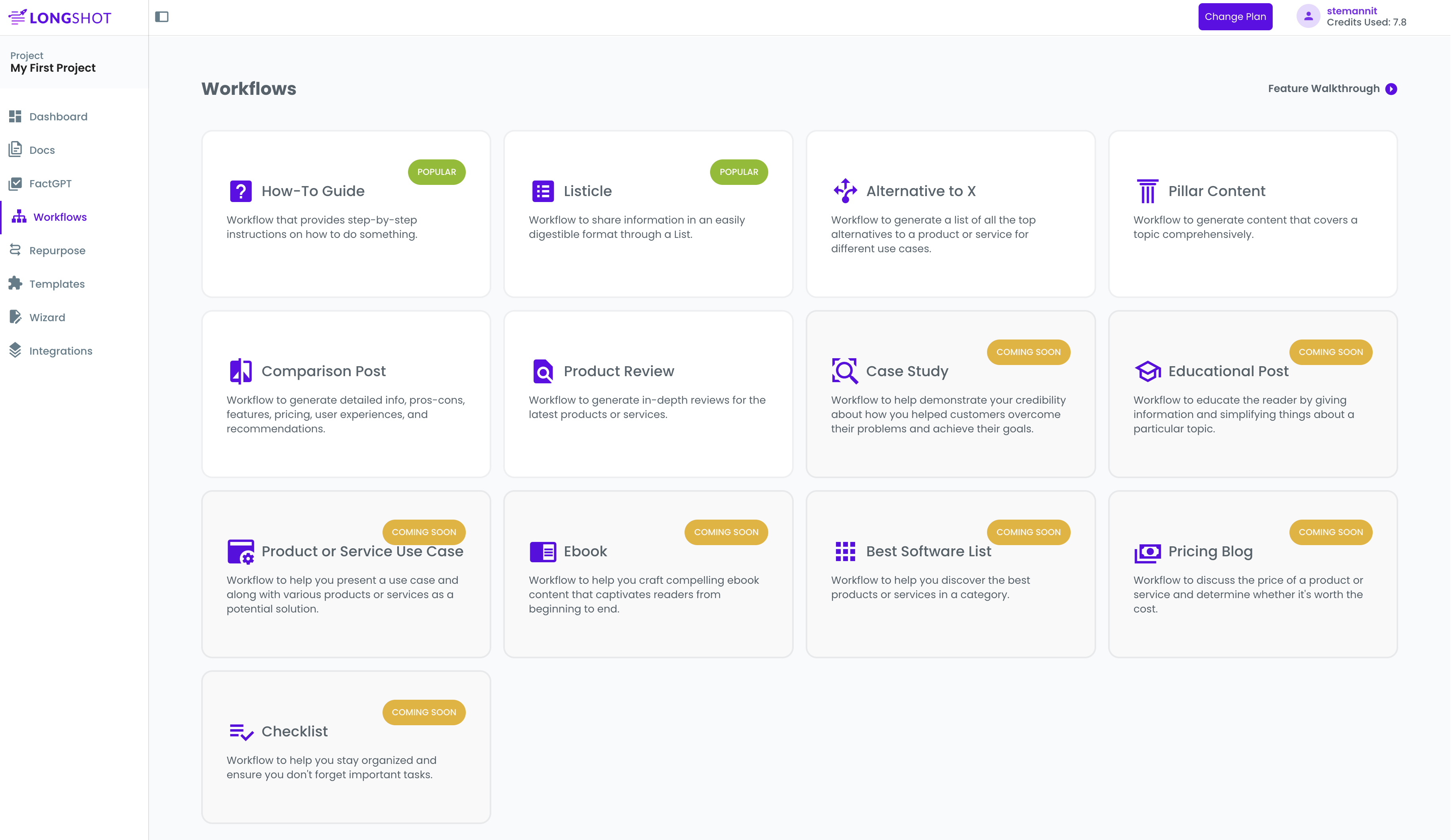
With the AI workflows, you get 6 ready to use workflows, and they’re working on many more. I tested both the how-to guide and the listicle.
For each workflow, you’re guided through a wizard of 3 steps:
- Headline
- Outline
- Editor/Content
It was super easy to use, and for the how-to workflow, I tested with the following query: How to tie my shoes.
The first step after describing my query was to choose the headline, and it generated the following headlines:
- Learn How to Tie Your Shoes with this Step-by-Step Guide
- Master the Art of Tying Your Shoes with this How-To Guide
- Step-by-Step Tutorial on How to Tie Your Shoes Properly
- Discover the Simple Steps to Tying Your Shoes with Ease
- Never Struggle with Shoelaces Again: Follow this How-To Guide on Tying Your Shoes
Overall super happy with the results. They’re engaging and improved for search engines to increase the click-through rate.
The next step was to generate an outline, and again I’m super impressed. It generated a decent outline description, and I could easily add my headings.
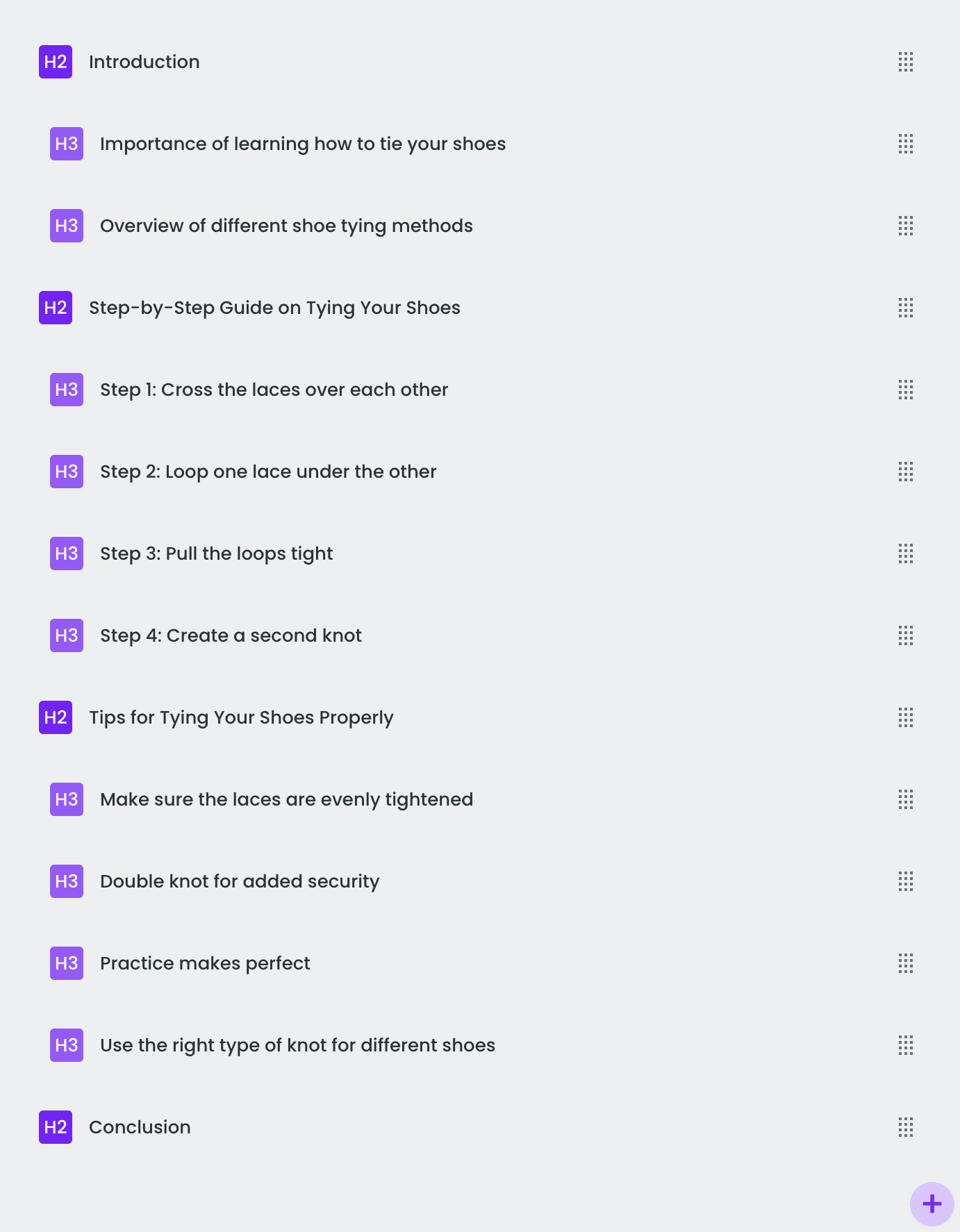
The last step was to generate the blog post. It took a couple of minutes, and then it was ready.
LongShot AI uses a combination of GPT-4 and its own custom models to help you create the best-optimised content for search engines.
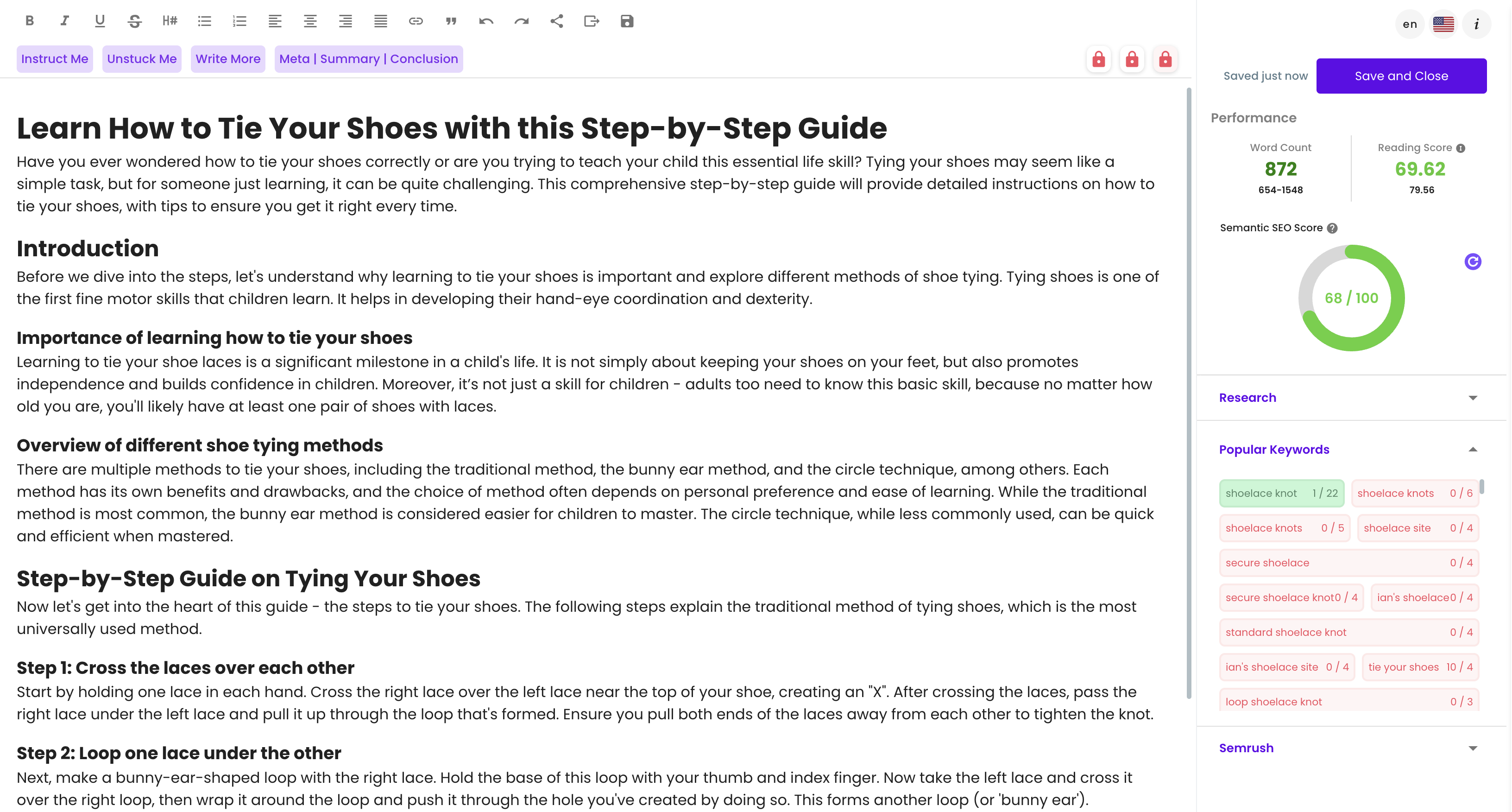
And with the content generated, you get a content score on the right, including popular keywords.
You also have a research tab where you can see the competitors on the search query and questions asked on the query.
But it’s a bit brief. Compared to the SEO content analysis from Frase, they still have a long way to go.
But there are 2 things I want to say here:
- The content generated is very brief
- It’s not using popular keywords.
I’m wondering why they’re not using the popular keywords, as they know them and are showing them, but in this case, it only used one of the keywords.
The other thing is the content itself.
It’s not separated into multiple paragraphs, so it gets difficult to read, and there are no lists, tables or formatted content of any type.
So overall, the idea is great, and they’re on the way, but they need to include the keywords and make the content easier to read.
Recommended reading
AI Content Templates
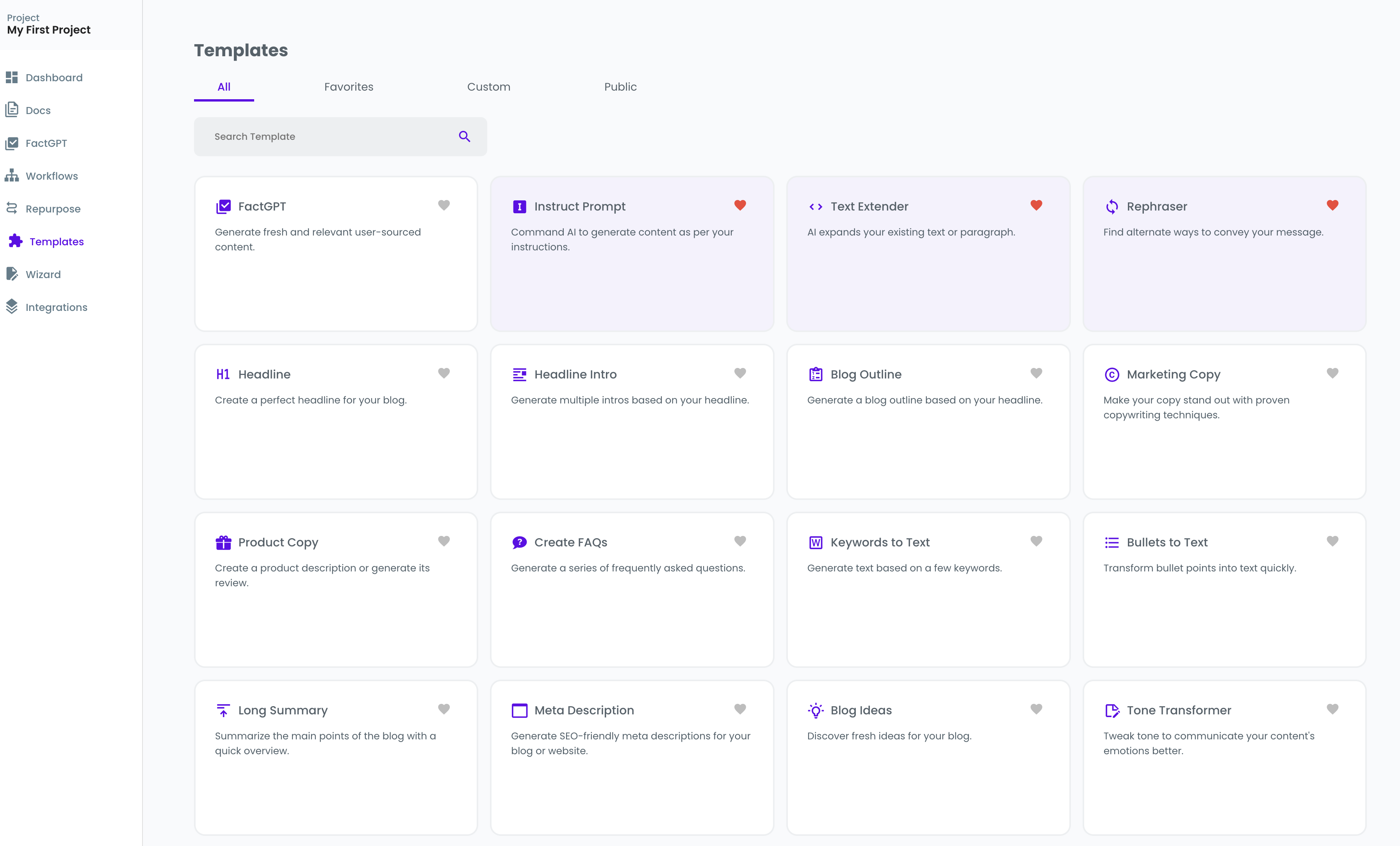
They offer 25 different AI Content tools or templates, as they call them.
With all these content generation tools, you can generate blog outlines, marketing copy, product copy, and more.
You need to choose the language for each tool, but the rest of the input fields differ.
These tools are great, but they could replace all the tools with a chatbot so we could easily chat with the bot and request these elements.
That said, content generation tools like this give more control to the output of each request, but it’s much slower if you need multiple formats or need to use multiple content writing tools.
So it all depends on your workflow if you want precise content based on trained advanced algorithms and don’t care if it slows you down. Then these AI content templates are perfect.
Overall the results from testing multiple templates were great. The product review generator I’m not sure I would ever use, but the FAQ template is great.
LongShot FactGPT To Fact-Check Your Content
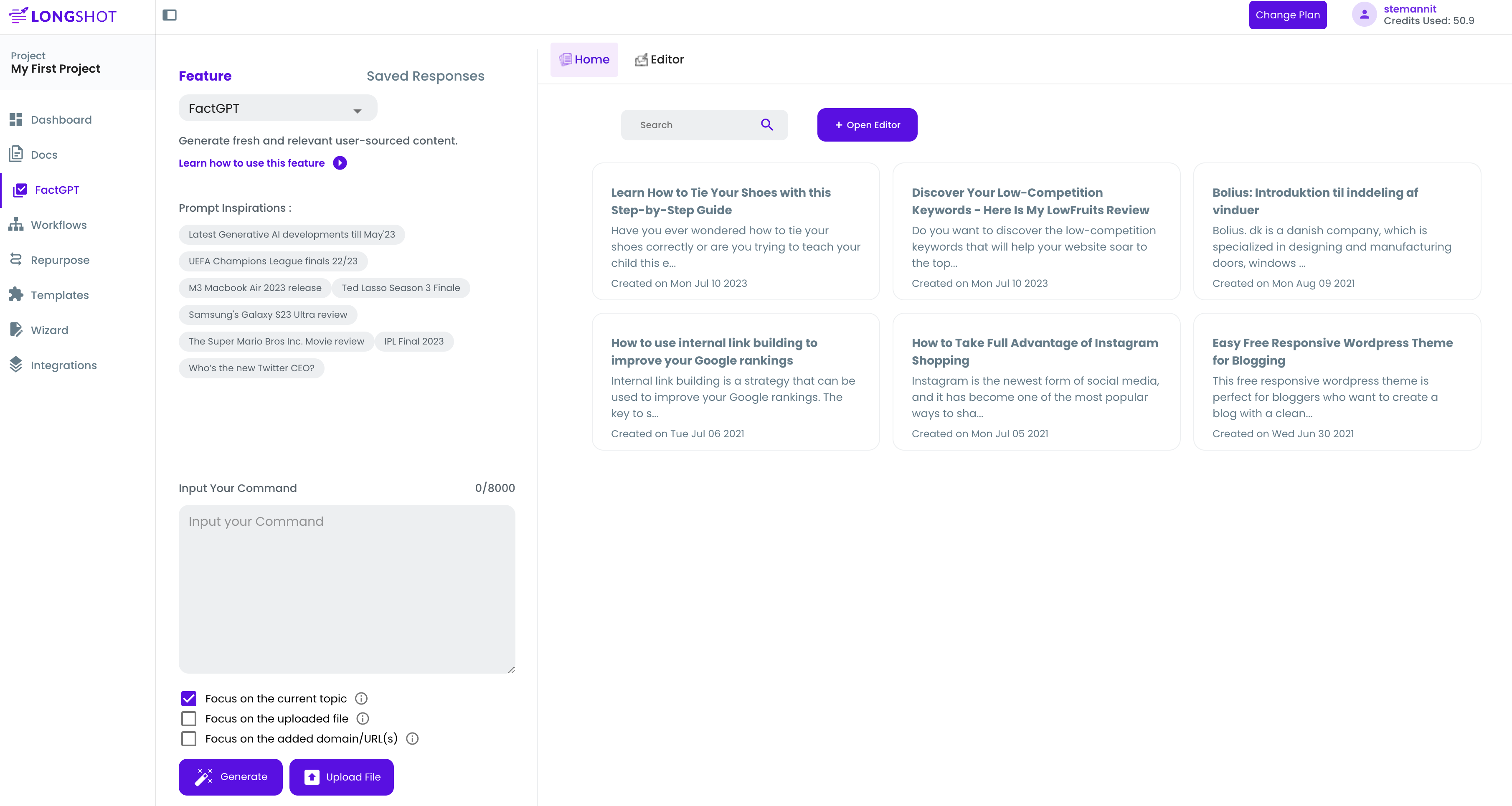
The FactGPT module is super interesting, and not something every AI copywriting tool has.
OpenAI has only trained their algorithms to 2022, so every data after there you’ll have to find elsewhere, and that you can use FactGPT for.
The way it works is that it can either generate newer content for you based on the results in the SERP or check your content for you.
So if you have a piece of content you want to get factual checked, you can run it through and ensure all facts are correct.
It then uses the SERP to identify the factual accuracy of your content.
It works well, but sometimes when I use it, I find it to be a bit slow, and it’s not all types of content on which it could check the factual accuracy.
Repurpose Your AI Content To Tweets, LinkedIn posts and more
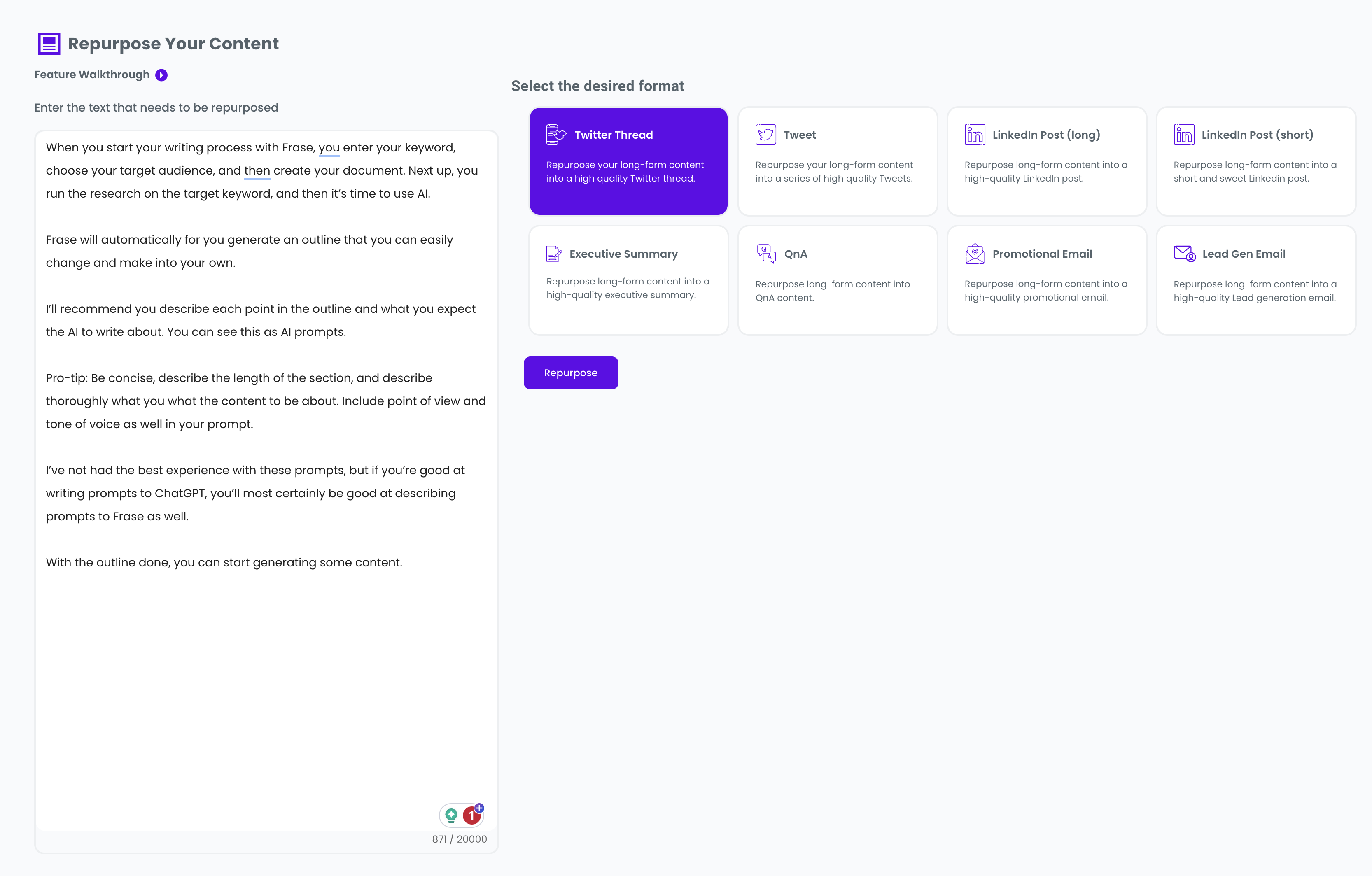
This is by far my favourite module with LongShot AI, and it’s so awesome!
You can take your entire blog post or a section from it, enter it in the text area to the left, and then repurpose it to Twitter, LinkedIn and more.
You can choose between:
- Twitter Thread
- Tweet
- LinkedIn Post (long)
- Linked Post (short)
- Executive summary
- QnA
- Promotional Email
- Lead Gen Email
I tested it with a couple of blog posts, and it works better than I could imagine. It’s such an awesome way to use your content for multiple purposes and create hype around your content.
It’s not a feature I’ve seen in many other tools, so I was excited when I noticed they had added it. This allows you to create personalised content as the content is based on your own content.
AI Wizard To Create A Long-Form Article
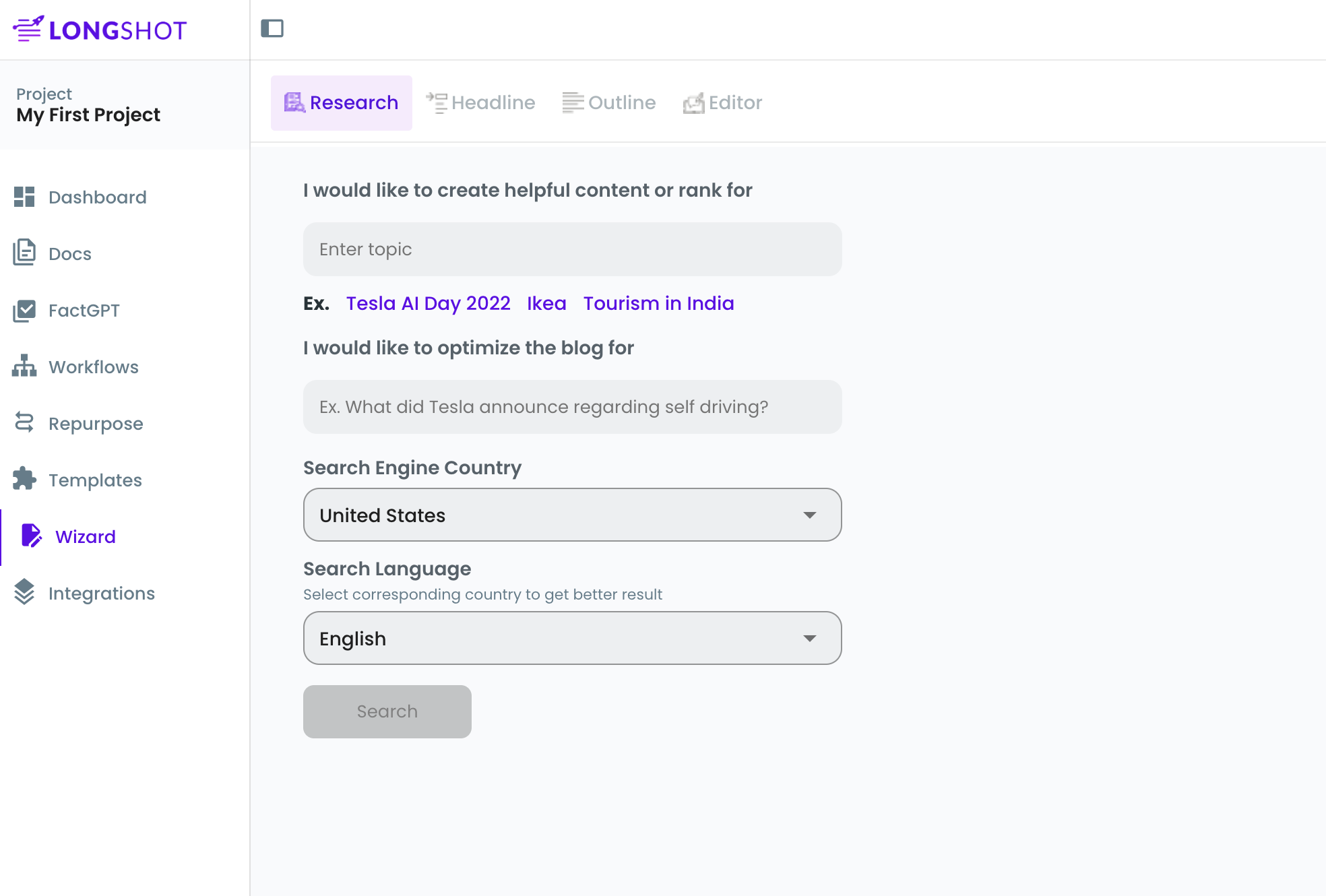
This is the wizard where you create SEO-optimised content.
Simply enter your topic, what it should be optimised for and what country and language you want to target.
It’s a bit different from other AI copywriting tools, where we usually enter the search query we want to target, but this works as well.
The next steps are just like the workflow steps, where we need to choose our headline and outline.
It takes a bit of time to generate content using the wizard flow, but if they’re using GPT-4 for this feature, it makes sense, as GPT-4 is not that fast.
You choose your subheadings and questions as well, and in the bottom right, you get a short summary from the optimisation module where you get to see:
- The average number of headings
- Average word count
- Flesch-Kincaid Reading Score
Next up, you have to choose your outline, which you can do based on the SERP and AI. It works very well.
The last step is where the AI get to work to generate the content for your article.
I still see the same issues as with the AI workflows. No lists. Too long paragraphs. No formatted text to break it up and make it easier to read.
It’ll become an awesome tool if they can fix these minor things and generate more content for the sections.
In the AI editor, you have the same options as the workflow editor, where you can generate more content for each section by using their action panel.
Here you can choose between:
- Unstuck me
- Write more
- Expand content
- Generate introduction
- Create FAQs
- Create a list
- Add bullet points
- Fact check content
- Plagiarism check
- Repurpose content
- Rephrase content
All these are awesome ways to make your content easier to read, but I do wish they happened automatically, which makes it more efficient to use.
Integrations To Create Better Content

They have created integrations as well to improve your use of their AI features.
If you’re using Semrush, you can integrate your account to pull in more keywords which helps you optimise your content even further. This takes your AI-generated content to the next level.
You can also use the custom integration with a webhook to do whatever you want with the content. Integrate with Zapier to push your content to any CMS you use, for example.
With the Hubspot integration, you can enrich your CRM with data and content from LongShot. It works easily, and you can push content without issues to Hubspot.
If you’re using Ghost for your blog, then fear not. LongShot integrates with this as well, so you can get your compelling content on your website with a single click.
Lastly, the same goes for Medium. Integrate your Medium account, use the content generator in LongShot, and easily push content to Medium.
LongShot AI Plugins (Chrome + WordPress)
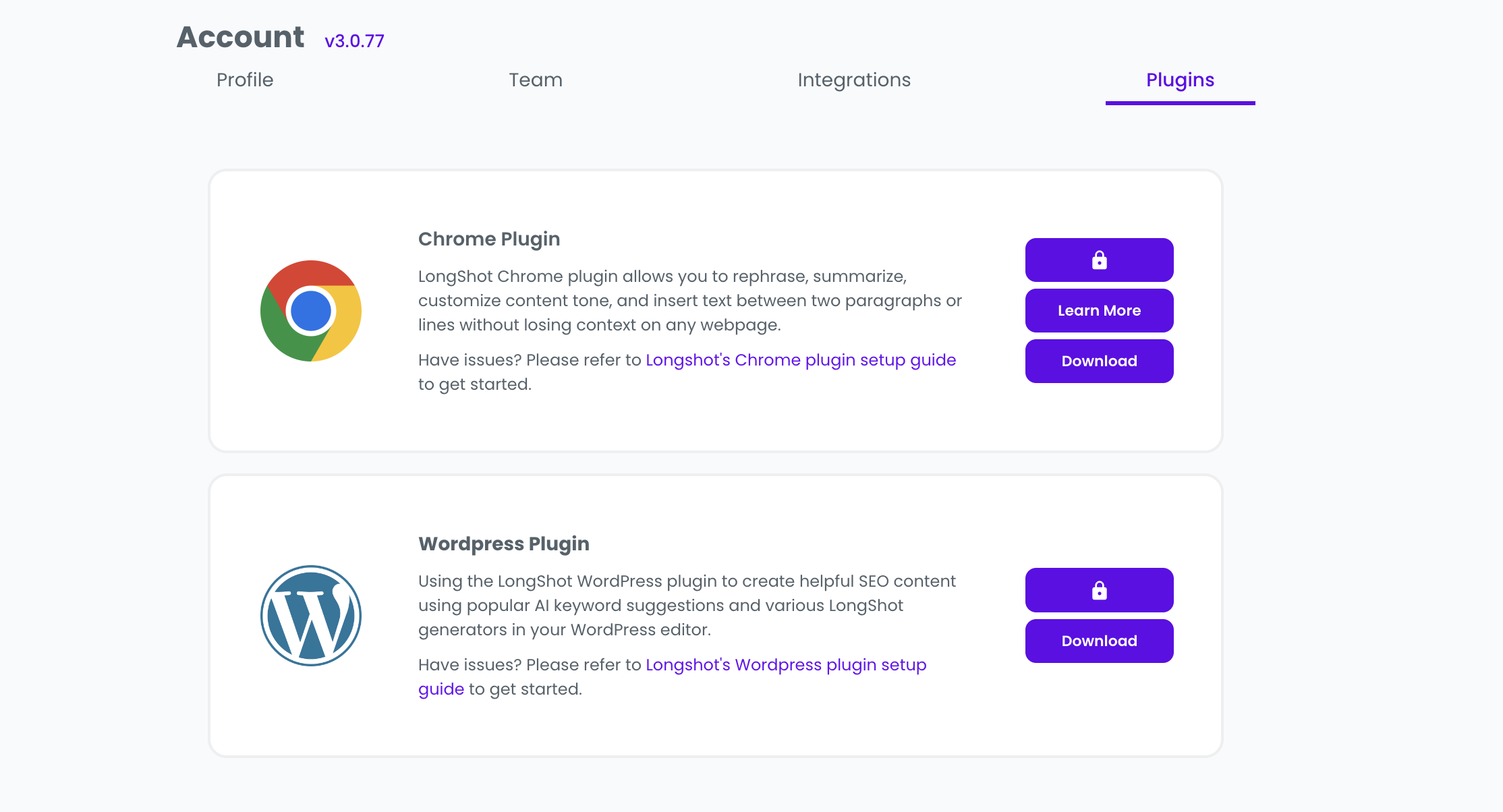
They have developed 2 plugins, one for Chrome and one for WordPress.
The Chrome extension is awesome because it gives you most of the functionality from LongShot AI everywhere on the web.
So if you want to summarise something you’ve written or elaborate on a point, you can use the Chrome extension.
The WordPress plugin is an exciting plugin as well.
This gives you the entire functionality of LongShot AI in your WordPress editor, so you never have to leave the editor.
You can generate content in WordPress and optimise it as well. It works well, and it’s great to see as it really optimises your workflow and makes you more efficient.
As a content creation tool, this works great, and it really helps you create content with ease. Where you’re sure with the fact-checking tool, everything is in order.
This is a full content circle.
Alternatives To LongShot AI
While I haven’t seen many AI Copywriting tools manage to do the same things as LongShot AI, there are 2 I’m thinking of when I test and use LongShot AI.
Katteb
Katteb also has a fact-checking module to check all your written content is factual and correct.
On top of this then, they also use GPT-4 to generate content.
But they have an internal link module which is super interesting if you’re focused on SEO.
But instead of a library of AI templates, they’ve added a chat much like KoalaChat and ChatGPT.
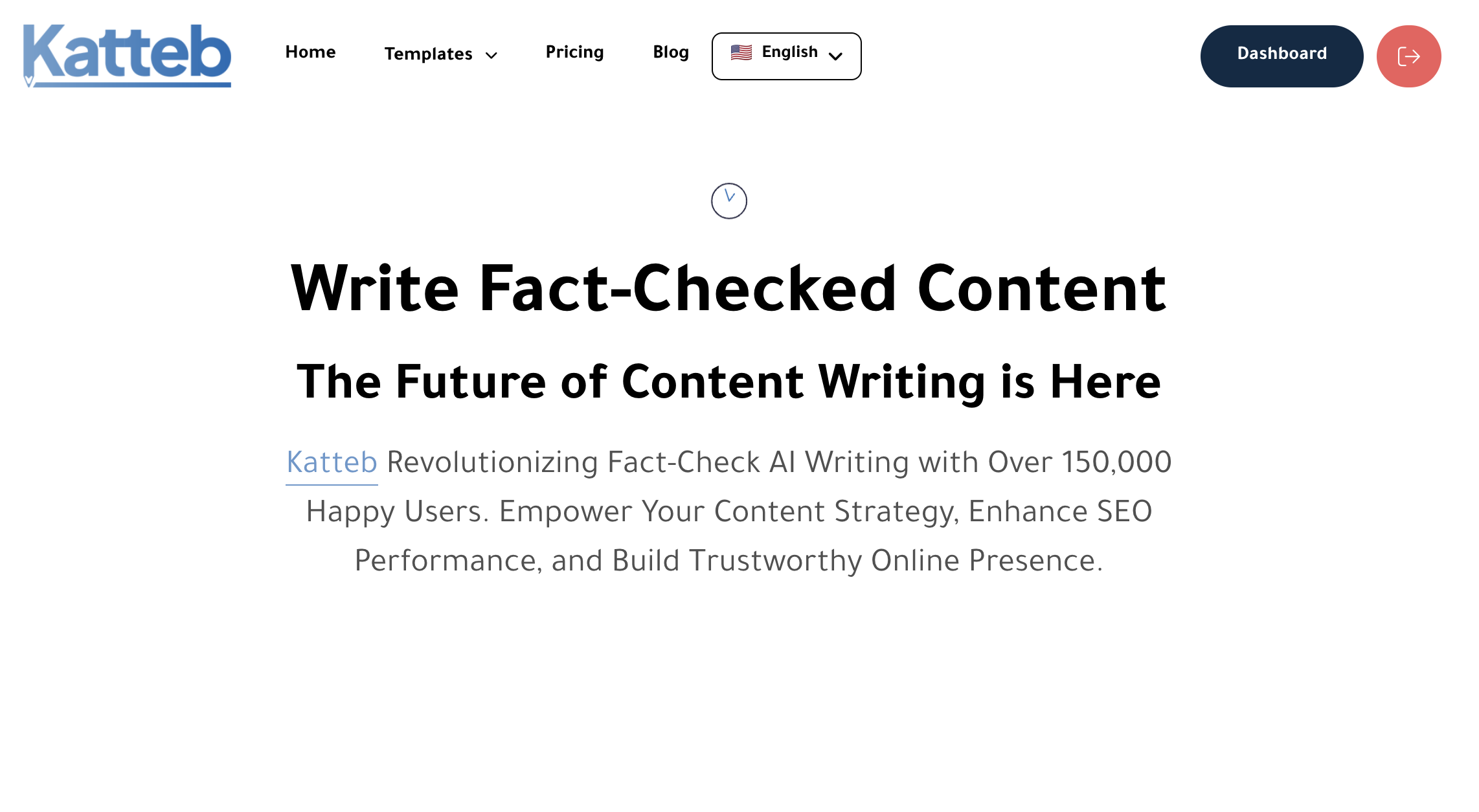
PepperType
When PepperType came out back in the day, it was just like LongShot AI with many AI templates to generate content.
Today it’s mainly based on a chat powered by OpenAI to help you generate content.
It works basically like an assistant where you request content, and the chatbot returns your request.
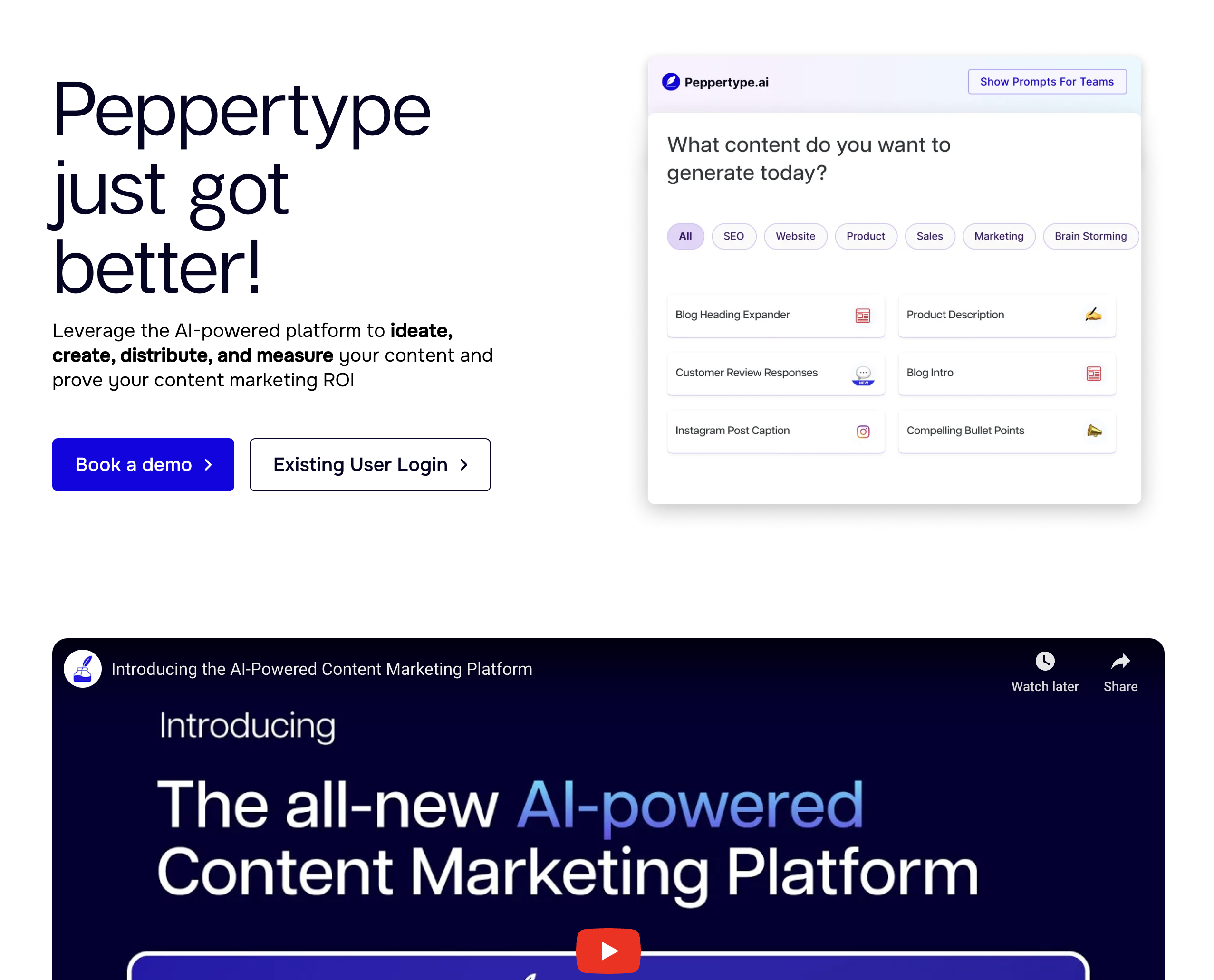
LongShot AI Pricing
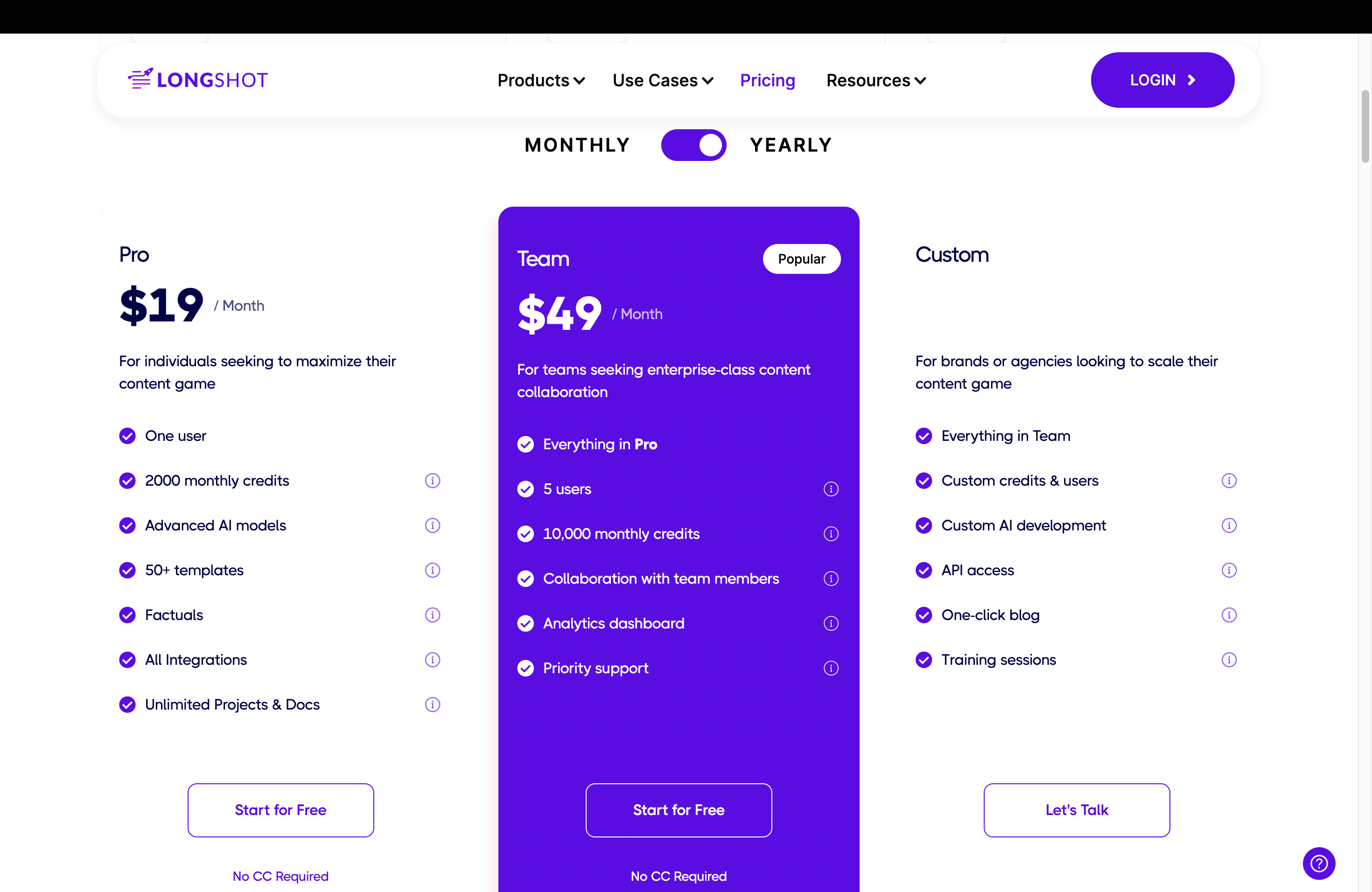
The pricing using LongShot AI is based on credits, so every time you do something, it costs credits. You can start for free without entering your card details.
Even though the price is low, I did find that I quickly spend my credits, so if you’re planning to use it on a daily basis, you need the classic plan at least.
The team plan gives you a ton of monthly credits, and you only need that if the Pro plan isn’t sufficient.
You can also customize a plan depending on your needs and your goals but the pricing will vary.
Who Is LongShot AI Made For?
LongShot is made for content creators to ease the content creation process.
LongShot AI was made with GPT 3 to help you generate everything from long-form content to short-form content.
So if you’re working with content, whether it’s blog content, social media or even newsletters, then LongShot AI is for you.
You can use their templates and workflows to generate content for specific use cases, and it works very well.
Wrap-Up: Is LongShot AI Worth It?
Yes, LongShot AI is definitely worth it. I’ll go so far as to say, based on the repurpose content module alone, LongShot AI is worth it.
It makes me save so much time after I write a piece of content, and it’s just an awesome idea to SEO content and repurpose it.
You can take one piece of content and use it on 3 other media while still keeping it personal and relevant for your content.
At the same time, you can use the many templates and workflows trained on AI algorithms to ensure the best possible output.
Overall LongShot AI has come far, and it’s so worth the price tag($29 per month).
LongShot AI
My Last Thoughts
If you’re a content creator looking to save time repurposing your content, give LongShot AI a try.
You get much more with the fact-checking module that allows you to create more up-to-date content.

LongShot AI

In this LongShot AI review I go over all the AI Copywriting features, and how you can use it to repurpose your content to 2 other media.
4
Pros
- Every tool is trained and specified for its use case, whether it's a blog outline or a summary of a long text.
- The FactGPT works very well and helps you speed up checking everything is factually correct.
- The Wizard helps you generate a blog post with outlines and content research.
Cons
- There is no chat to request content in a specific format. KoalaChat works very well for this.
- The wizard has a bit too many steps to generate an article compared to how I do in my Koala Writer AI review.



